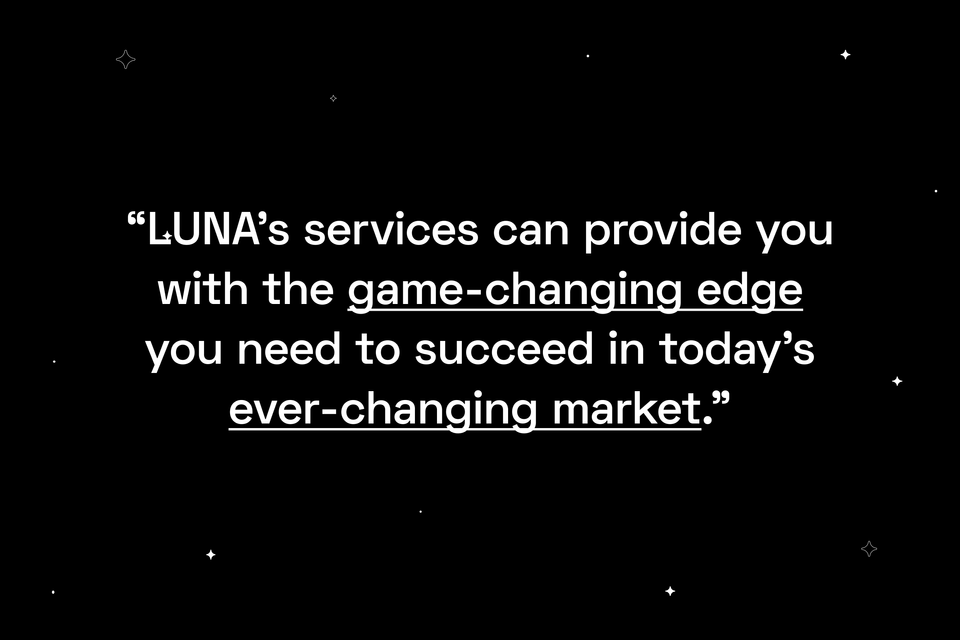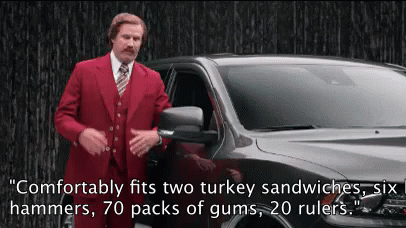Leased vs. Owned Vehicles: Insurance Options

Auto insurance is a crucial consideration for car owners and lessees alike, but it's important to understand how different categories of vehicles affect insurance options. Leased and owned vehicles have unique insurance considerations, and it's wise to compare quotes to ensure the best coverage for each. Leased car insurance is often more expensive, as lease insurance requirements may be higher than those for owned vehicles.
Adequate owned vehicle coverage is also a must, as the owner is responsible for all damages, regardless of fault. These differences highlight the importance of understanding insurance options for different types of vehicles. Fortunately, LUNA is an innovative app and expert service that can help customers navigate these options and obtain the best auto insurance coverage. LUNA offers efficiency, simplicity, savings, expert access, hassle-free transition, and real-time tracking, among other unique features. With LUNA's focus on customer-centric services, comparing and understanding insurance options has never been easier.
Section 1: Insurance Requirements for Leased Vehicles

Leasing a vehicle has become an increasingly popular trend among car enthusiasts. The convenience of low monthly payments and the ability to drive a brand new car every few years makes it an attractive option for many. However, before you drive off the lot, it's important to understand the insurance requirements associated with leasing a car. Leased car insurance typically requires higher liability limits to protect against potential damages or accidents, which can be costly.
Gap insurance is also recommended, as it covers the difference between the amount owed on the lease and the actual value of the car. It's important to note that leased car insurance is separate from owned vehicle coverage, so be sure to compare auto insurance policies and find the right lease insurance requirements that fit your needs. By understanding the insurance requirements associated with leasing a car, you can ensure you are adequately protected while enjoying the benefits of driving a new vehicle.
LUNA Insurance revolutionizes the industry by offering an advanced app for easy and efficient leased car insurance. Compare quotes in 2 minutes, save $597/year, and get 24/7 expert support. Clear policy limits, privacy protection, and hassle-free management. Say goodbye to guesswork and find the right leased car insurance with LUNA.
Section 2: Insurance Considerations for Owned Vehicles
When it comes to insuring owned vehicles, there are a variety of options and considerations to keep in mind. One of the first things to think about is your individual coverage needs. For example, if you're looking to insure a new car, you may want to consider purchasing comprehensive coverage, which can provide protection for a wide range of damages and losses, including theft, damage from natural disasters, and collisions with other vehicles or objects.
Alternatively, if you own an older car, you might opt for more basic coverage, such as liability insurance, which can help cover damages or injuries you might cause to others in an accident. It's also worth noting that insurance needs can vary depending on the age and condition of your vehicle. For instance, a brand-new car might require more comprehensive insurance than a ten-year-old vehicle that's already experienced significant depreciation. Similarly, older cars might not require the same level of maintenance and care as newer models, which could impact your insurance needs and costs.
Ultimately, the key is to do your research and compare various insurance options based on your unique needs and circumstances. By taking the time to explore your options and find the right coverage for your owned vehicle, you can ensure that you're fully protected and able to drive with confidence.
Section 3: Cost Comparison of Insurance for Leased vs. Owned Vehicles

When it comes to insuring a car, whether it is owned or leased can have a significant impact on the cost. Statistically speaking, the average insurance premium for a leased car is about 25% higher than that for an owned vehicle. This is largely due to the fact that lease insurance requirements tend to be more stringent than those for owned cars.
Insurers may require higher limits for liability coverage, as well as additional coverage for things like gap insurance and excess wear and tear. On the other hand, owned vehicle coverage often includes the option to choose a higher deductible, which can help reduce overall premiums.
Ultimately, it's important to carefully consider your individual insurance needs and shop around for the best auto insurance comparison that suits your requirements. Being knowledgeable about the differences in cost and coverage between leased car insurance and owned vehicle coverage can help you make a more informed decision and save you money in the long run.
Section 4: Gap Insurance and Its Importance for Leased Vehicles
As car leasing becomes increasingly popular among American drivers, it is essential to understand the differences between owned vehicle coverage and leased car insurance. Gap insurance, in particular, plays a crucial role in protecting leased vehicles from financial losses in the event of an accident.
Unlike traditional insurance policies, gap insurance is designed to cover the difference between the amount owed on a car and what it is worth at the time of a total loss, also known as the “gap”. Without this type of coverage, drivers may be at risk of ending up with outstanding balances on their car leases, even after their vehicles have been totaled.
While lease insurance requirements vary by state, it is important to compare auto insurance policies to ensure that you have the right coverage for your leased car. Ultimately, gap insurance can provide peace of mind for drivers and the confidence to enjoy their leased vehicles without worrying about the financial consequences of unforeseen circumstances.
Section 5: Customizing Insurance Policies for Owned Vehicles

When it comes to insuring a vehicle, there are many options available, especially when it comes to owned vehicles. Customizing an insurance policy to suit your needs not only means selecting the right coverage options, but also tailoring your deductibles and adding special riders for equipment or other unique features. It's important to note, however, that leased car insurance and owned vehicle coverage can differ drastically, and navigating these differences can be both tedious and confusing.
That's why an auto insurance comparison is critical; it can help you find the right coverage and deductibles for your specific needs. Additionally, if you lease a car, you will need to satisfy lease insurance requirements enacted by the dealership or leasing company. All this being said, knowing what options are available and what coverage is right for you can help ensure that you're fully protected in the event of an accident.
Section 6: The Impact of Vehicle Type and Usage on Insurance
When it comes to vehicle insurance, there are a few key factors that can greatly impact the available options and costs. One of those factors is the type of vehicle in question. Luxury cars, for example, often come with a higher insurance price tag due to their increased value and potential for costly repairs.
Meanwhile, more affordable economy cars may have lower insurance premiums. Additionally, the intended use of a vehicle (whether it is for personal or business purposes) can also impact insurance options. Those who use their personal vehicle for work may need to invest in additional coverage to ensure they are protected in case of a work-related accident.
Meanwhile, those who lease a vehicle may be required to purchase specific insurance coverage by their leasing company. With so many different considerations to keep in mind, it's important for drivers to explore their options and compare quotes from different insurance providers. By doing so, they can make an informed decision that delivers the right level of coverage without breaking the bank.
Section 7: Navigating Insurance Claims for Leased vs. Owned Vehicles

Understanding the differences between insurance claims for leased versus owned vehicles is crucial for drivers looking to navigate the complex world of auto insurance. While both types of coverage share similarities, there are key distinctions that can have a significant impact on the claims process. For leased cars, insurance requirements are often more strict, with many leases mandating specific coverage amounts and types.
Additionally, leased vehicle insurance claims may be subject to different deductibles and limitations, making it important to carefully read the terms of the lease agreement before making a claim. For owned vehicles, coverage options may vary widely, with drivers able to choose from a range of providers and levels of protection. However, it is essential to carefully compare policies and consider factors such as deductibles, coverage limits, and accident forgiveness policies when choosing a provider.
In either case, the key to efficiently handling insurance claims is preparation. Drivers should be proactive in reviewing their coverage, documenting damage and accidents, and filing claims promptly to ensure a smooth process. By understanding the nuances of leased car insurance versus owned vehicle coverage and keeping these tips in mind, drivers can navigate the complex world of auto insurance with confidence and peace of mind.
Section 8: LUNA Dedicated Section
LUNA is the go-to platform when it comes to leasing and owning a vehicle and getting the best auto insurance coverage. Their innovative app and personalized services offer expert suggestions tailored to your specific needs, which is beneficial for anyone looking for cost-effective solutions.
LUNA's real-time tracking, digital ID cards, and hassle-free transition make it easier for customers to manage their policies. In addition, LUNA's automatic shopping feature allows users to receive optimal coverage at the best prices when it is time for policy renewal. Their privacy protection feature gives customers the assurance that their data is secure.
LUNA's team of licensed professionals is available around the clock for all your queries. Users have saved an average of $597/year on auto insurance, which is another reason to turn to LUNA for leased car insurance and owned vehicle coverage. Their services are available in Washington and Oregon with plans to expand nationwide. LUNA's customer-centric approach is evident in their success stories, where customers found optimal coverage through LUNA.
Choosing insurance coverage for leased or owned vehicles requires a thorough consideration of various factors. Lease insurance requirements differ from those for owned vehicles, and policyholders must account for this in their decision-making process. Cost is also a significant consideration, with insurance for leased vehicles often being more expensive than that for owned vehicles due to lease termination fees and mileage restrictions.
Gap insurance is particularly important when leasing a car, as it helps cover the difference between the insurance payout and the remaining lease balance in case of accidents. For owned vehicles, customizing insurance policies according to the driver's needs and preferences can be advantageous. Furthermore, the impact of vehicle type and usage on insurance should not be overlooked. Finally, knowing how to navigate insurance claims for leased versus owned vehicles can make a difference in the overall cost and timely handling of damages. By weighing these key considerations, policyholders can make informed and responsible decisions to ensure appropriate and adequate coverage for their leased or owned vehicle.
